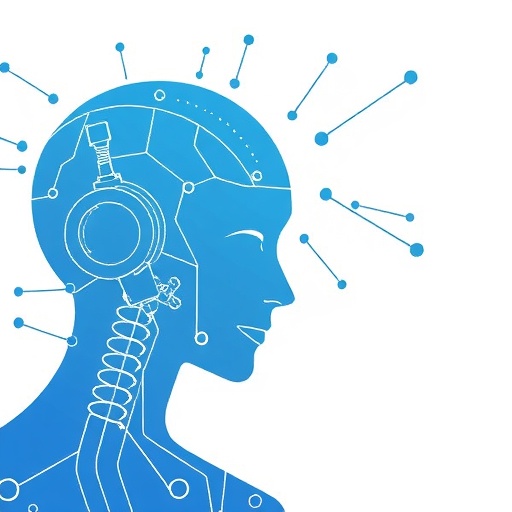
In the ever-evolving field of educational assessment, utilizing advanced technological methodologies has become increasingly vital. A recent groundbreaking study by L. Zhang introduces an innovative system for evaluating student comprehensive quality, which leverages improved analytic hierarchy processes combined with back propagation neural networks. This confluence of artificial intelligence and structured evaluation empowers institutions to better discern student capabilities, aligning educational outcomes with contemporary demands and expectations.
The typical assessment models have long relied on conventional metrics, which may fall short in capturing the multi-dimensional nature of student performance. Zhang’s research addresses this critical gap by proposing a sophisticated framework that integrates complex decision-making processes with machine learning algorithms. The analytic hierarchy process (AHP), a well-established method in decision analysis, serves as the backbone of this assessment model. By breaking down decisions into a hierarchy, it’s possible to analyze various factors that contribute to students’ performance in a structured manner.
Simultaneously, the integration of back propagation neural networks augments the system’s analytical power. This artificial intelligence technique is adept at learning from data, allowing for the extraction of nuanced insights from a vast array of indicators that define student quality. The dual application of AHP and back propagation not only increases the robustness of assessments but also provides a more comprehensive view of student strengths and weaknesses.
As educational landscapes continue to shift towards personalized learning experiences, this innovative assessment system holds significant relevance. It allows educators and administrators to tailor instructional strategies that better meet the needs of individual students. This tailored approach fosters a learning environment that is agile, responsive, and ultimately more effective in nurturing student potential.
One of the most compelling aspects of Zhang’s research is its applicability across diverse educational settings. Whether in primary, secondary, or tertiary education, the comprehensive quality assessment system can be adapted to meet specific institutional needs. This versatility ensures that educational stakeholders can utilize the framework to enhance learning outcomes and foster student engagement effectively.
Additionally, the implementation of this assessment system encourages a culture of continuous improvement in educational practices. By systematically analyzing student performance metrics, educators can identify trends and areas for growth, enabling data-driven decisions that enhance curriculum development. This data-centric approach to education empowers institutions to stay ahead of the curve in an increasingly competitive academic landscape.
Zhang also emphasizes the necessity of cultivating critical thinking and problem-solving skills in students. By utilizing a system that prioritizes comprehensive quality assessment, educational institutions can facilitate the development of these essential competencies. Students who are assessed through this multifaceted lens are more likely to emerge from their educational experiences equipped with the skills required to navigate complex real-world challenges.
Moreover, the research highlights the importance of stakeholder engagement in the assessment process. By incorporating feedback from students, educators, and even parents, the system amplifies its relevance and effectiveness. This collaborative approach leads to a more nuanced understanding of student performance, ultimately enriching the educational experience and outcomes.
In the face of an ever-increasing reliance on technology within the education sector, Zhang’s work stands at the intersection of tradition and innovation. It respects the foundational principles of educational assessment while pushing the envelope towards a more technology-driven future. The potential for seamless integration of this assessment system into existing educational frameworks is vast, paving the way for transformative changes in the classroom.
The implications of this research extend beyond academic institutions, reaching into policy-making and educational reform discussions. By equipping educational leaders with effective tools to assess and improve student quality comprehensively, the findings may influence policy decisions aiming at optimizing educational strategies nationwide.
Furthermore, the impact of this assessment system is likely to resonate on international platforms as well. With educational systems across countries seeking to implement reforms in light of rapid technological advancements, Zhang’s framework can serve as a model. Institutions globally can benefit from customizable solutions tailored to their specific cultural and educational contexts.
As the landscape of higher education evolves, incorporating AI-driven approaches like those proposed by Zhang will become increasingly crucial. By creating a direct connection between evaluation and educational strategies, the research encourages educators to embrace innovation as a means to advance pedagogical practices. With this shift, the barriers to effective teaching and learning can be diminished significantly.
Indeed, the work of L. Zhang not only contributes to the body of knowledge in educational assessment but also lays the groundwork for future research in this domain. The implications of this comprehensive quality assessment system are multifaceted, encompassing not just theoretical advancements but practical applications that can lead to real change within classrooms. Educational institutions are called to examine these innovations closely, embarking on a journey toward excellence in student assessment and overall educational quality.
In conclusion, the convergence of the analytic hierarchy process with back propagation neural networks as proposed by Zhang presents an exciting frontier in educational assessment. By embracing this innovative methodology, educators and administrators can navigate the complexities of student evaluation with confidence, ensuring that they are not just assessing, but genuinely understanding and fostering student potential. As the educational landscape continues to transform, this research stands as a beacon of progress, inviting academic institutions to explore the full capabilities of their students through advanced assessment methodologies.
Subject of Research: Student Comprehensive Quality Assessment System
Article Title: A student comprehensive quality assessment system based on improved analytic hierarchy process and back propagation neural network.
Article References:
Zhang, L. A student comprehensive quality assessment system based on improved analytic hierarchy process and back propagation neural network. Discov Artif Intell 5, 228 (2025). https://doi.org/10.1007/s44163-025-00498-0
Image Credits: AI Generated
DOI: 10.1007/s44163-025-00498-0
Keywords: Assessment, Education, Analytic Hierarchy Process, Neural Networks, Artificial Intelligence, Student Evaluation, Educational Reforms, Student Quality.
Tags: advanced AI techniques in educationanalytic hierarchy process in educationartificial intelligence in educational settingsback propagation neural networks in assessmentcomprehensive quality evaluation in educationdecision-making processes in student assessmentenhancing student capabilities through AIimproving student evaluation systemsinnovative student assessment methodsmachine learning in educational assessmentmodernizing educational outcomesmulti-dimensional student performance evaluation




